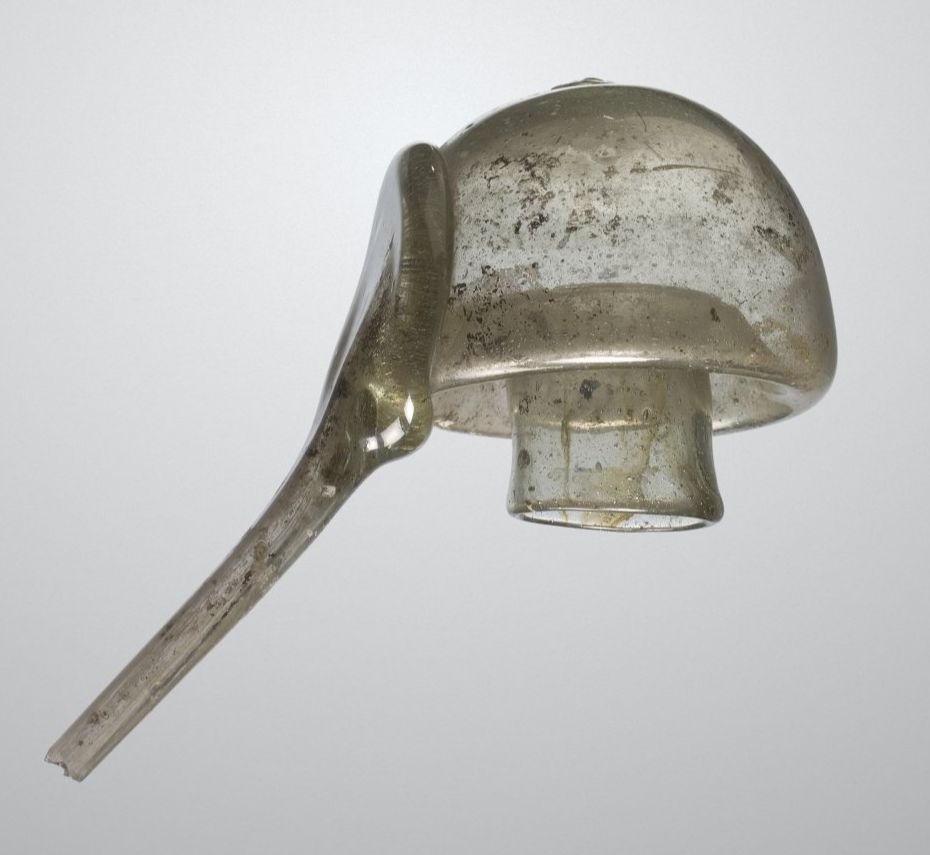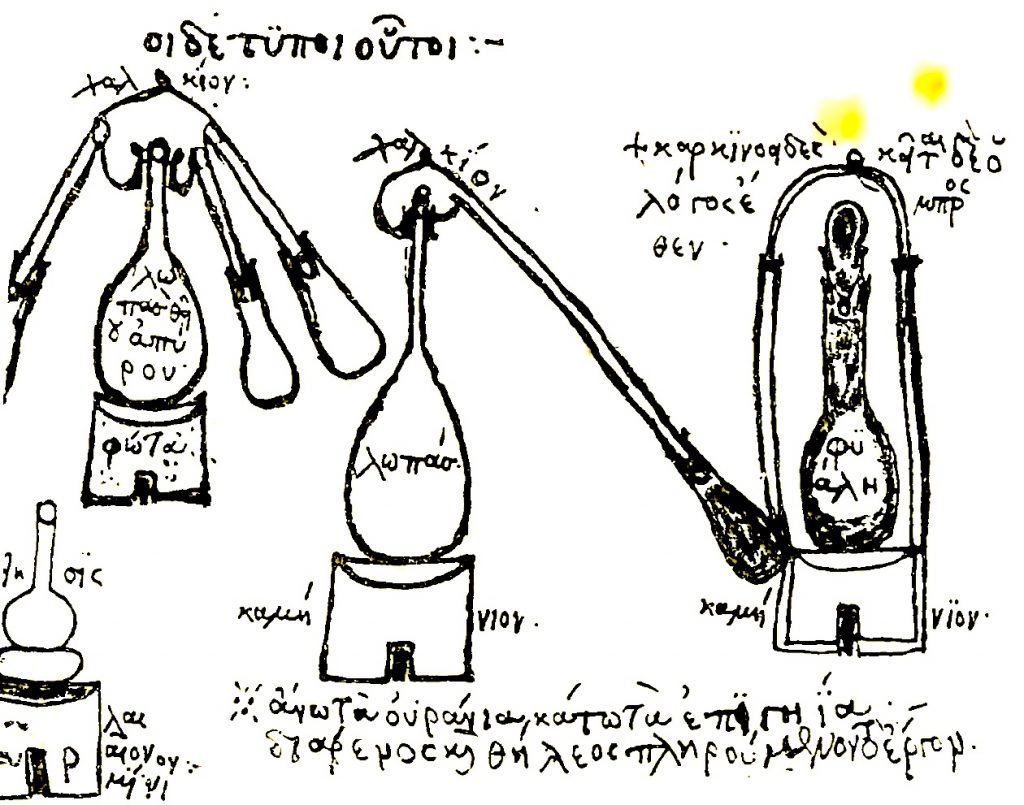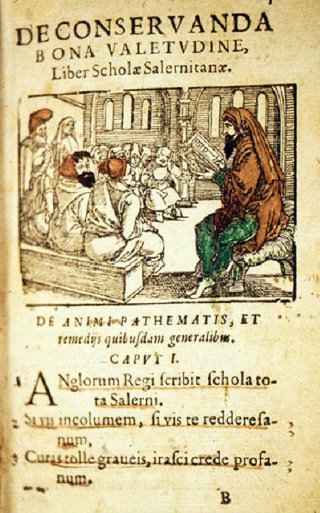As you know we like to nerd out with deep dives into the minutia of our craft. Today that deep dive is an exploration of history and the most common questions that we are asked at the tasting room. “Why Ambix?”
The shortest but least satisfying answer is that an ambix is an ancient Greek (original spelling ἄμβιξ ) word for a particular type of cup that has a pouring spout on the side.

A slightly better answer and context is the modern name for a traditional pot still is an “Alembic Still”. This modern word for an ancient device derives from the Arabic word Al-inbiq (الإنبيق) which in turn came from the Greek word Ambix. Keeping in mind that Al simply means “the” so Al-inbiq is basically “the Ambix” transliterated into Arabic and is the name given to traditional distillation equipment.
So how did an ancient word for a cup came to be associated with modern distillation? This is where the history becomes murkier but more interesting and the answer longer and satisfying but also rooted in vague ancient texts. I draw from several resources for the below story many of which are referenced at the end and I strongly recommend each for more information.

The first documented apparatus that resembles a modern still was described by Zosimus of Panopolis. Zosiumus lived in Alexandria in the 4rd century AD and wrote some of the oldest surviving texts on Alchemy which was thriving in Alexandria at the time. In Zosimus’s text he gives credit for the creation of the distillation apparatus to a predecessor, Mary the Jewess, who likely lived sometime in the 1st through 3rd century AD.

Alexandria was a research capital in the ancient world, on a cross roads of trade, housing the great library and with diverse Greek, Egyptian and Jewish populations. It was in this fertile soil that western Alchemy evolved and many concepts and instruments that survive in modern chemistry including the alembic were developed. While we have written records from Zosiumus that directly quote Mary we do not have any direct works from Mary herself, partially due to the many attacks on the city and library but its also possible that Mary the Jewess may have been a construct to describe a Jewish school of Alchemy in Alexandria. In either case what she represents shed light on the innovation and diversity of Alexandria in the era,
Zosiumus describes many inventions of Mary including the double boiler, or bain marie, which still bears her name today and was a means of heating the still, the Kerotakis which was effectively a sealed heated pot and the tribikos which was a 3-headed alembic (or triple ambix). Collectively these three instruments all credited to Mary comprise the critical elements of modern distillation technique. The critical item that Mary and Zosiumus did not develop is the condenser needed to cool the distillate back to room temperature. This would be a necessary component for the collection of liquid ethanol.
Mary used this early distilling apparatus to research the properties of materials such as Sulfur and Mercury, as well as alchemy pursuits such as trying to find a way to turn base metals into gold and a recipe for the philosophers stone. She also is credited for developing inorganic dies including Caput Mortum, an iron oxide based purple pigment as well as kohl which is the famous Egyptian eyeliner and Mary’s distillation apparatus is credited for improving the quality and color of the kohl. Transliterated into Arabic we get al-kohl which many historians claim came to be the word generally used for things produced by a still.. transliterated into English as… Alcohol.

In 642 AD Alexandria was captured by Arab forces who started to translate and then evolve he Hellenistic Alchemy technology during a golden age of culture and academics. The Arabs continued to evolve Mary’s ambix for alchemy. The reason that Mary’s ambix was not suitable for producing alcohol is that it had no means of cooling, any ethanol produced would simply exit the still as a vapor and be lost. Many claim that Arab alchemist, Jabir ibn Hayyan who lived in the 8-9th century and like Mary may have been a person or may have been a construct to represent a school of research that improved Mary’s ambix by elongating its neck to transform it into what is now called a retort. This key improvement might have enabled the improved Arabic alembic to produce liquid ethanol from wine, but there is no clear evidence when this started.

In the centuries after Jabir ibn Hayyans, artifacts such the glass ambix started appearing in greater numbers as well as stories of a liquid that could stop infections. Credit goes to the Medical School of Salerno on the Amalfi coast for developing a commercial scale, but secret, technique for alcohol distillation in the 11th or 12th century. While they attempted to keep the production means secret many records show they were evolving the Arabic Alembic by improve cooling technologies.
Our story ends where recorded history of distillation begins. In the Vatican Consila codex of 1276 Taddeo Alderotti de Firenze produced a detailed description of the double distillation of wine to produce brandy leading to the birth of modern alembic distillation technique
The path is hazy but intriguing. Starting in Alexandrea in the 2nd century with Maria the Jewess’s ambix, evolving in Iraq in the 8th century with Jabir Ibn Hayyan’s Al-imbiq, through the school of Salerno in the 11th and 12th century, and ultimately to being formally published in the 13th century.
We are drawn to our production of brandy for many reasons, one of them being able to play a miniscule role in a craft that dates back centuries and naming our distillery for the an invention credited to a alchemist in Alexandria is part of that place in craft heritage.
References
Proof: The science of Booze by Adam Rogers has a detailed description of the science and history of Alcohol including a deep dive into this topic.
https://www.metmuseum.org/blogs/ruminations/2016/alembics is a good writeup from an intern at the Met Museum which discusses alembics from the 6th to 12th centuries that are in its collection.
https://www.nature.com/articles/159784a0 is a Nature article that describes the Kerotakis
https://www.sciencefriday.com/articles/the-origin-of-the-word-alcohol/, a nice writing outlining the history of Alcohol
http://www.therumhistorian.com/2018/12/17/the-origin-of-alcoholic-distillation-in-the-west-the-arabs/ is a summary of the Arabic evolution of distillation technology
https://culinarybackstreets.com/cities-category/naples/2019/spirited-away/ is a discussion of the school of Salerno
https://www.gotrum.com/the-rum-university/rum-in-history/the-origins-of-alcoholic-distillation-in-the-west-4-the-medical-school-of-solerno/ has more information on Salerno

